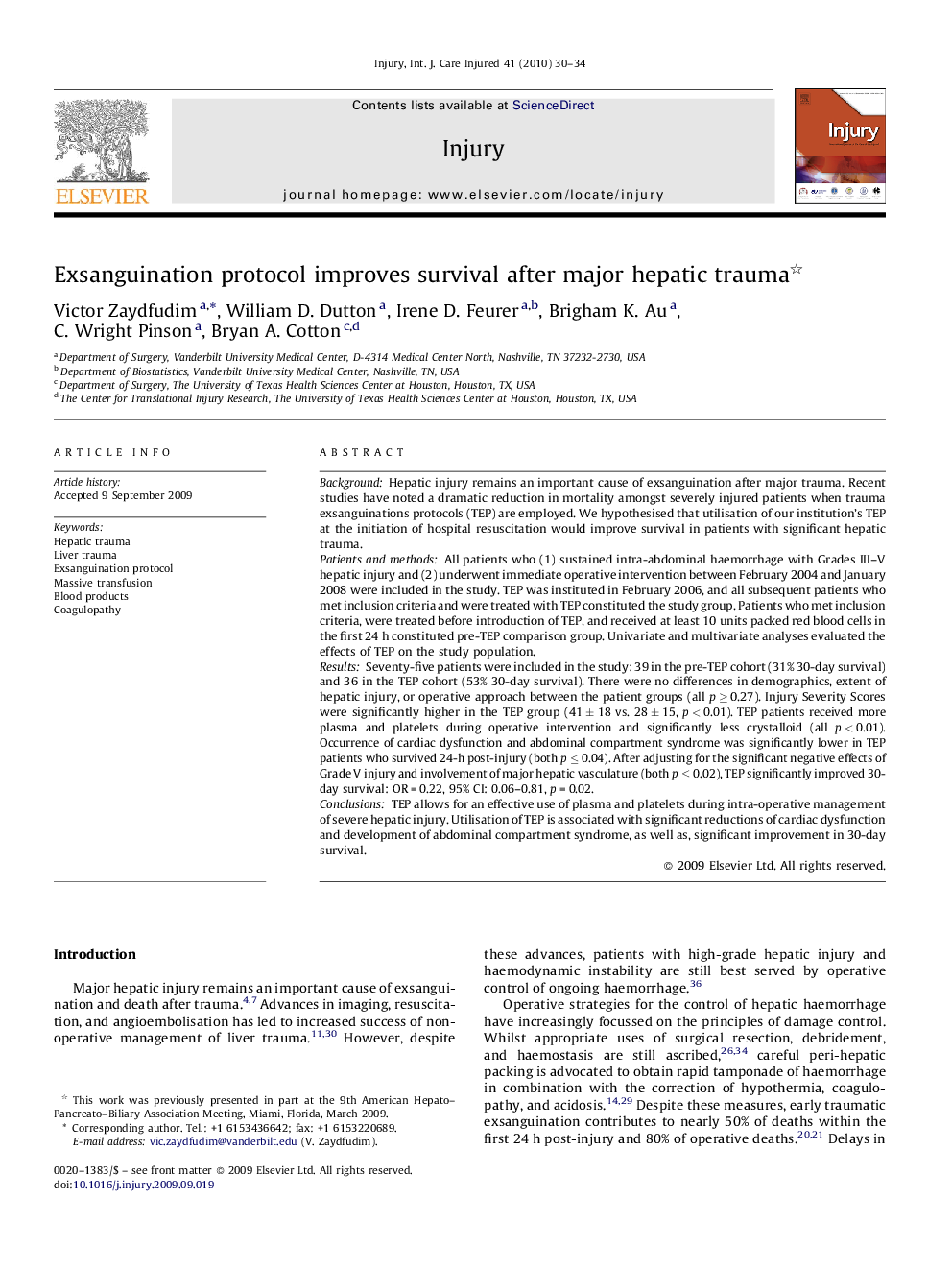| کد مقاله | کد نشریه | سال انتشار | مقاله انگلیسی | نسخه تمام متن |
|---|---|---|---|---|
| 3241728 | 1206089 | 2010 | 5 صفحه PDF | دانلود رایگان |

BackgroundHepatic injury remains an important cause of exsanguination after major trauma. Recent studies have noted a dramatic reduction in mortality amongst severely injured patients when trauma exsanguinations protocols (TEP) are employed. We hypothesised that utilisation of our institution's TEP at the initiation of hospital resuscitation would improve survival in patients with significant hepatic trauma.Patients and methodsAll patients who (1) sustained intra-abdominal haemorrhage with Grades III–V hepatic injury and (2) underwent immediate operative intervention between February 2004 and January 2008 were included in the study. TEP was instituted in February 2006, and all subsequent patients who met inclusion criteria and were treated with TEP constituted the study group. Patients who met inclusion criteria, were treated before introduction of TEP, and received at least 10 units packed red blood cells in the first 24 h constituted pre-TEP comparison group. Univariate and multivariate analyses evaluated the effects of TEP on the study population.ResultsSeventy-five patients were included in the study: 39 in the pre-TEP cohort (31% 30-day survival) and 36 in the TEP cohort (53% 30-day survival). There were no differences in demographics, extent of hepatic injury, or operative approach between the patient groups (all p ≥ 0.27). Injury Severity Scores were significantly higher in the TEP group (41 ± 18 vs. 28 ± 15, p < 0.01). TEP patients received more plasma and platelets during operative intervention and significantly less crystalloid (all p < 0.01). Occurrence of cardiac dysfunction and abdominal compartment syndrome was significantly lower in TEP patients who survived 24-h post-injury (both p ≤ 0.04). After adjusting for the significant negative effects of Grade V injury and involvement of major hepatic vasculature (both p ≤ 0.02), TEP significantly improved 30-day survival: OR = 0.22, 95% CI: 0.06–0.81, p = 0.02.ConclusionsTEP allows for an effective use of plasma and platelets during intra-operative management of severe hepatic injury. Utilisation of TEP is associated with significant reductions of cardiac dysfunction and development of abdominal compartment syndrome, as well as, significant improvement in 30-day survival.
Journal: Injury - Volume 41, Issue 1, January 2010, Pages 30–34